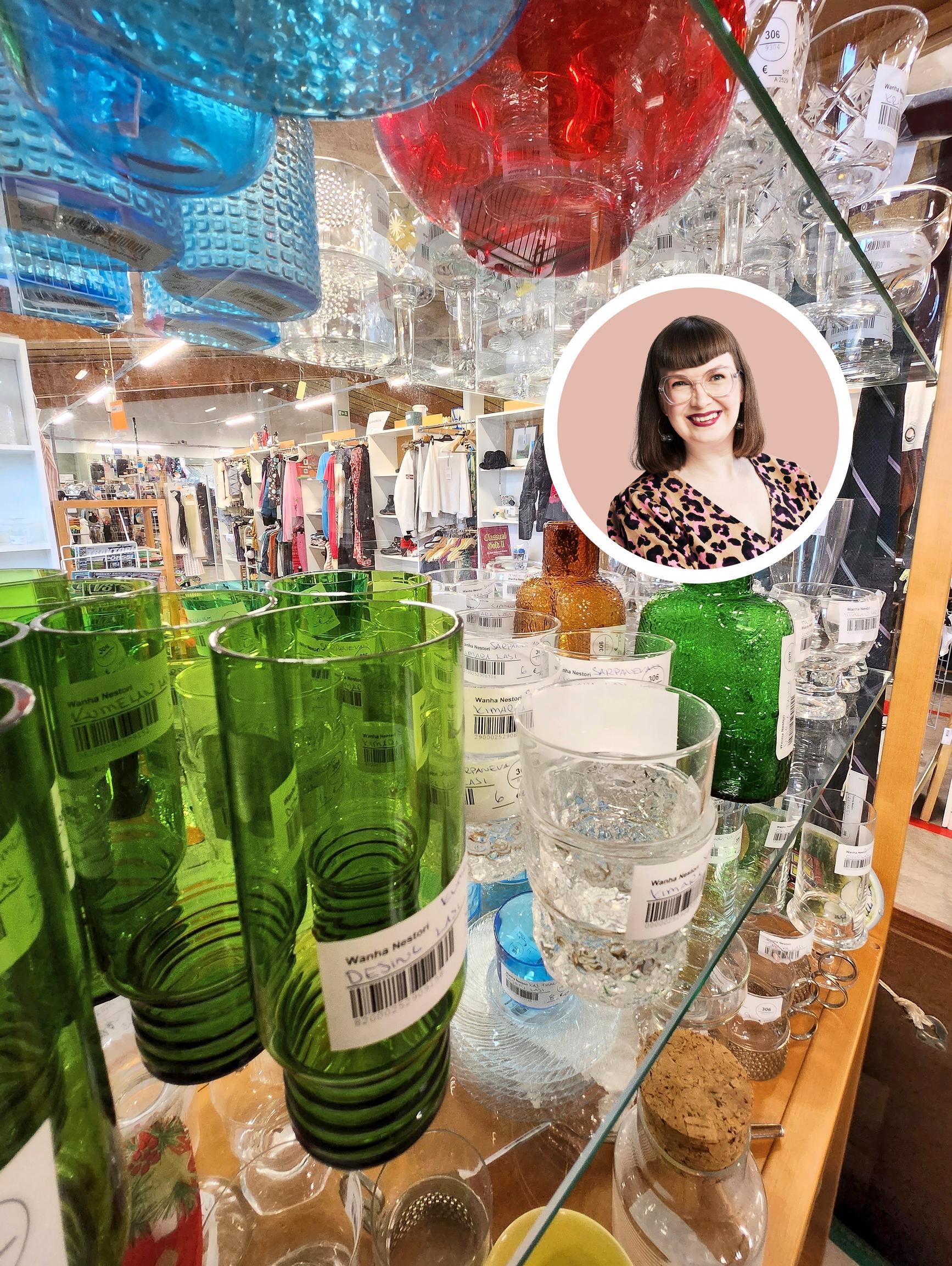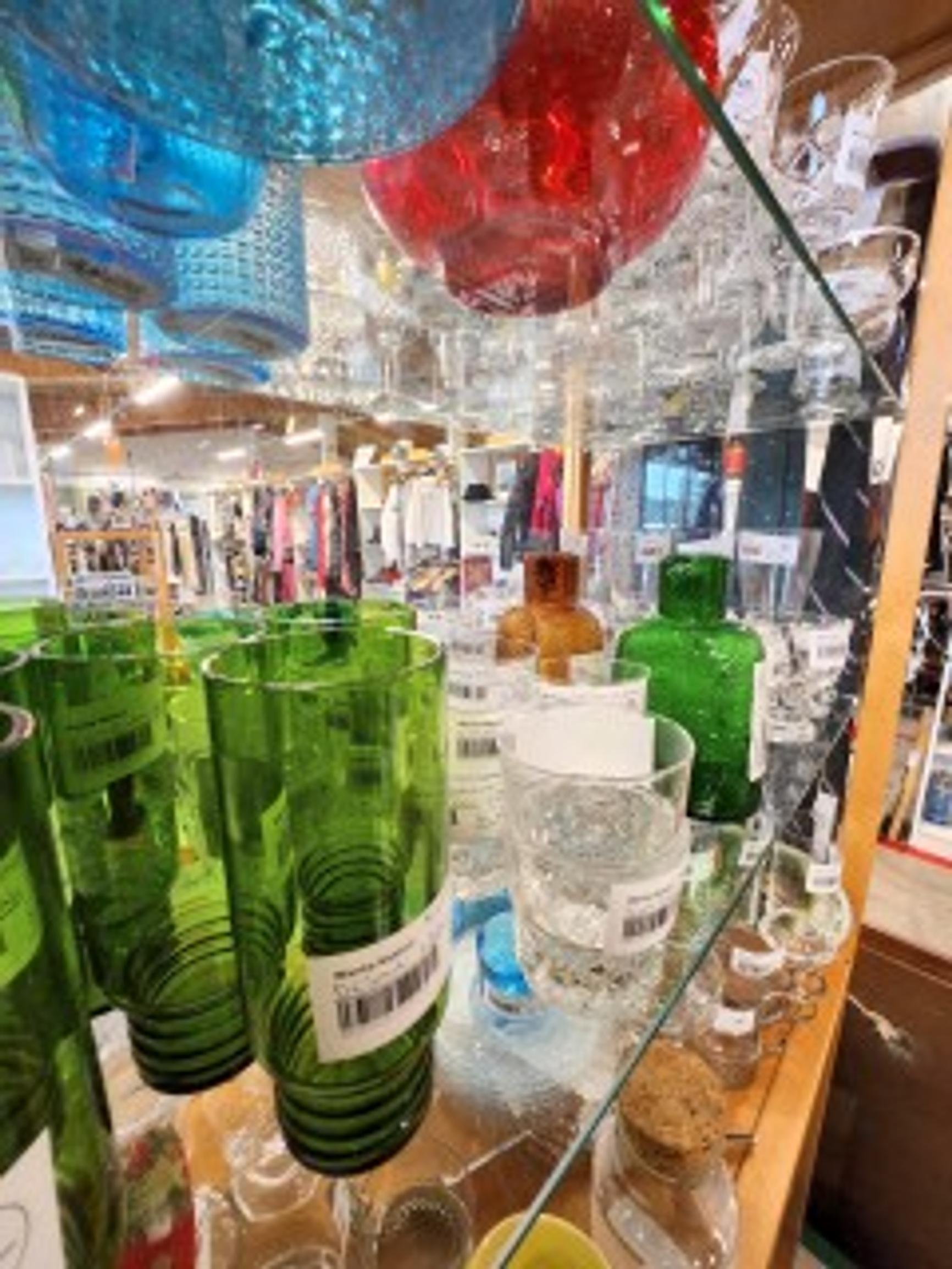
6 must-know flea market tips from Kotona's vintage-loving Art Director Elina: make a list, resist temptation, bring a measuring tape
Kotona’s AD and vintage enthusiast, Elina Henttonen, shares what to watch out for on a flea market visit so you can make successful finds.
1. Recognize quality.
If you’re decorating your home, you can find almost everything secondhand. Look for tableware, kitchen utensils, home textiles, decorative items, and vintage furniture. Furniture made from solid wood before the particleboard era can last for decades, and you can often find it for less than a new MDF piece. Because it’s solid wood, you can sand or paint it to suit your taste if the surface is worn or doesn’t fit your style.
Older textiles also tend to be more durable than new ones. Look for genuine natural materials such as wool, linen, and cotton.
2. Make a shopping list.
Keep a running list on your phone of everything you need, from a whisk to picture frames.
Also note any essential measurements. Keep photos of your home to help match colors and styles. Always bring a measuring tape.
3. Be bold.
Spotting a hidden gem can feel like searching for a needle in a haystack. Sellers are usually price-savvy, and there’s a huge range to choose from. Your eye will sharpen only through hands-on browsing. You won’t always score a find, and that’s a good sign! Sometimes, more peculiar or even slightly suspicious flea markets can yield the best discoveries.
4. Resist temptation.
At a flea market, it can be tough to resist impulse buys. Don’t pick up anything you don’t need just because it’s cheap. Think about whether you truly have a use for it and enough storage space. Even if you find a well-known designer piece at a bargain price, stay cool. It’s always more trouble to get rid of extra stuff than it is to buy it.


5. Learn the price range.
Get familiar with Google Lens, an unbeatable tool for identifying items and comparing prices. Keep in mind that a designer brand doesn’t automatically mean something is valuable. Certain pieces are more sought after—and pricier—than others. For example, individual pieces from the Arabia Valencia line can cost tens of euros, while gold-trimmed, hand-wash-only Myrna or line-scratched Ruska rarely spark interest.
When it comes to drinking glasses, large, versatile tumblers remain the most popular. Tiny shot glasses no longer see much use or collecting interest, so there’s often no reason to pay a high price for them—even if they’re by a famous designer.
In smaller towns, where there’s less competition and selection, prices can sometimes be higher than in big cities.
6. Inspect, sniff, and clean.
Check each item thoroughly. Make sure price stickers aren’t covering stains or cracks. Give it a sniff. If it smells strong, looks faded, or is stained, leave it behind. Flip furniture over to check the underside for signs of pests. If you want to be extra careful, freeze any textiles before using them to kill possible bugs.
You can usually wash dishes, even gold-trimmed and crystal ones, at least once in the dishwasher—though they may not hold up to repeated cycles. Avoid machine-washing valuable collectibles. A squeaky-clean dish is as good as new!


